Beth Kephart's Blog, page 45
June 30, 2015
the near tornado, at the horse show grounds
 Earlier today, unsettled by the much-too-much of the world, I took a walk to the horse show grounds down the street, where riders were at work. A storm, it was clear, was coming. I stayed as long as I could, then hurried home.
Earlier today, unsettled by the much-too-much of the world, I took a walk to the horse show grounds down the street, where riders were at work. A storm, it was clear, was coming. I stayed as long as I could, then hurried home.Ten minutes later my husband and I were standing in our basement looking out upon the skies. Our phones had blared tornado warnings. The newscasters were speaking of supercells. The clouds were circling themselves, collecting power. We saw wind blowing in three directions at once.
And then, where we were, it cleared. A bird sang a lonesome song. Somewhere, we knew, the winds were rushing strong, the power was going out, roofs were being threatened.
We live in a new era of weather.




Published on June 30, 2015 14:33
June 29, 2015
lessons in humility as I review my own student files from Penn
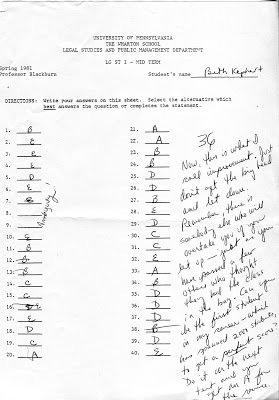 Reading through my old university files is akin to taking a graduate-level course in humility. How hard I tried—recopying notes, recopying the recopies. How overwhelmed I made myself by writing essays toward questions no one could ever really answer, by doing so much extra reading that I was drowning in the facts (and losing the essence). I was, it's clear, forcing myself toward a law degree as an undergrad. I was taking on extra projects at the Superior Court, writing papers on contract law, always looking for the legal angle in history papers and economics projects—and, most of the time, avoiding the fact that my passions lay elsewhere. I never took a single writing course at Penn. I only took one English course.
Reading through my old university files is akin to taking a graduate-level course in humility. How hard I tried—recopying notes, recopying the recopies. How overwhelmed I made myself by writing essays toward questions no one could ever really answer, by doing so much extra reading that I was drowning in the facts (and losing the essence). I was, it's clear, forcing myself toward a law degree as an undergrad. I was taking on extra projects at the Superior Court, writing papers on contract law, always looking for the legal angle in history papers and economics projects—and, most of the time, avoiding the fact that my passions lay elsewhere. I never took a single writing course at Penn. I only took one English course.My professors wrote long notes to me. They bashed, they encouraged. They gave me early B's, cajoled me toward less baroque results, congratulated me when progress was made.
But none of it was easy. Most of the time, trying so hard, I was lonely. So lonely and ultimately out of my element that I left Penn for one semester to take classes at the much-smaller Haverford College. There (and I recall this well) I found my niche. There conversation mattered as much as the final exam.
Just now, sifting and sorting through these files, I find a note I wrote to a favorite Haverford professor. The final paragraph:
Finally, I'd like to add that, as a University of Pennsylvania student who moved off campus this semester feeling utterly alienated and unable to communicate with my contemporaries, the group discussion session proved extremely valuable to me. It was an experience as necessary as it was fun.Perhaps I write today because I gave myself room for the poetic at Haverford. Perhaps much of the way I teach now at Penn stems from what I learned about the importance of creating classrooms where names are known, ideas are valued, and affection is absolute. We learn better in those environments. We take what we learned forward.




Published on June 29, 2015 05:50
June 28, 2015
on invoking and developing characters, at Arcadia's Creative Writing Summer Session

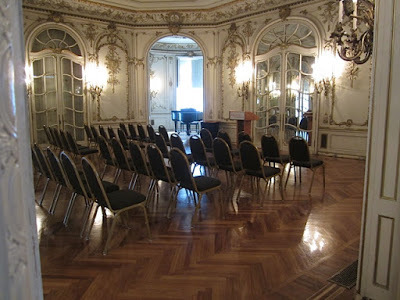 Yesterday, thanks to the generous invitation of Gretchen Haertsch, I spent time with the talented writers of Arcadia University's Creative Writing Summer Weekend in the sensational "castle" illustrated above. I taught a master class. I then reflected on the empathetic imagination as I read from my four Tamra Tuller novels—Small Damages, Going Over, One Thing Stolen, and the upcoming This Is the Story of You.
Yesterday, thanks to the generous invitation of Gretchen Haertsch, I spent time with the talented writers of Arcadia University's Creative Writing Summer Weekend in the sensational "castle" illustrated above. I taught a master class. I then reflected on the empathetic imagination as I read from my four Tamra Tuller novels—Small Damages, Going Over, One Thing Stolen, and the upcoming This Is the Story of You.(Thank you, my friends, for coming to see me. Thank you, Soup and Aimee, for the fireside chat.)
In the master class I was focused on the osmotic process I alluded to here. We undertook linked exercises designed to help the writers diagnose their strengths and fears and to help them locate new wellsprings of ideas and possibilities. One element in the lesson plan involved character development. I presented the writers with a number of character-invoking questions. I invited them to add to the question list. We next considered which three or four questions sparked the respective imaginations of each writer. Characters and creatures emerged.
I was asked if I might share the list of provoking questions and so I do, below. Perhaps a handful will inspire you.
Character Invokers
How does it interact with reality?
In what kind of weather does it thrive?
What kinds of arguments does it have?
What secrets has it shared with no one?
What questions does it chase?
What is its shoe size?
How does it deal with crisis?
Where does it find peace or solace?
How does it exercise its curiosity?
How does it greet or ignore the skies?
What does it miss?
What will it stand up for?
What would it change about itself?
Who are its heroes?
Does it dance, and if it does, to what music?
What songs was it sung when it was young?
Does it seek to be rooted in or to escape?
Does it crave lonesomeness?
Does it have faith in another day?
If it were colorblind would it be heartbroken?
What is its favorite word?
Who and what does it trust?
And from the writers:
What haunts it?
What is its least favorite vegetable?
What sense would it most not like to lose?
What does it value more than its own life?
How far would it go to achieve its goal?
Who or what gives it meaning?
Where would it like to travel?
Is it experiencing an existential crisis?
Is it afraid of crowds?
What makes it hopeful?
Does it like water?
What superpower does it wish for?
Where is it from?
How was it raised?
Does it long for the past or dream of the future?
Did it sleep last night?
What is its greatest fear?
What does it fear of the future?
What is its favorite color?




Published on June 28, 2015 04:19
June 27, 2015
thinking about the osmotic work of writers, today at Arcadia, and with the help of James Salter and Andrew Solomon
 In a few hours, I'll be at Arcadia University for the Creative Writing Summer Weekend. I'll be teaching a private master class. At 3:00, my reading will be free and open to the public. I invite you to join us on this rainy day.
In a few hours, I'll be at Arcadia University for the Creative Writing Summer Weekend. I'll be teaching a private master class. At 3:00, my reading will be free and open to the public. I invite you to join us on this rainy day.I've decided to focus on the idea of the osmotic for both the class and the reading. How we move from truth to fiction and back. How we empathize with both the real people in our lives and the characters that emerge from our dreams. How we maneuver imagination and compassion.
Today, choosing against the gym after a physically exhausting week, I had an extra hour to read and have spent that time in the company of James Salter. There, in the midst of a Paris Review Art of Fiction interview (with Edward Hirsch), I found Salter reflecting on this very topic:
INTERVIEWER
You once said that the word fiction is a crude word. Why?
SALTER
The notion that anything can be invented wholly and that these invented things are classified as fiction and that other writing, presumably not made up, is called nonfiction strikes me as a very arbitrary separation of things. We know that most great novels and stories come not from things that are entirely invented, but from perfect knowledge and close observation. To say they are made up is an injustice in describing them. I sometimes say that I don’t make up anything—obviously, that’s not true. But I am usually uninterested in writers who say that everything comes out of the imagination. I would rather be in a room with someone who is telling me the story of his life, which may be exaggerated and even have lies in it, but I want to hear the true story, essentially.
INTERVIEWER
You’re saying it’s always drawn from life?
SALTERAlmost always. Writing is not a science, and of course there are exceptions, but every writer I know and admire has essentially drawn either from his own life or his knowledge of things in life. Great dialogue, for instance, is very difficult to invent. Almost all great books have actual people in them.
Words I will share at Arcadia later today. Words that will help keep me balanced as I continue to reflect on what sort of osmotic project I might wrestle next.
Finally, today, I leave you with this—more words to be shared today at Arcadia. This time the writer is Andrew Solomon in The New Yorker and this time the osmotics concern youth and age:
This is what I will say to you most urgently: there are many obvious differences between middle age and youth, between having lived more and done more and being newly energized and fresh to the race. But the greatest difference is patience. Youth is notoriously impatient, even though there is no need for impatience early on, when people have the time to be patient. In middle age, the wisdom of patience seems more straightforward, but there aren’t so many days left. But Rilke is correct that we must all write as though eternity lay before us. Enjoy the flexibility that span of eternity offers. The discourse between the young and the nostalgic retains some of its inherent poetry in the form of a longing intimacy. The freshness of younger people awakens memories in older ones—because though you, young writers, are yourselves at the brink of your own future, you evoke the past for those who came before you.




Published on June 27, 2015 05:38
June 26, 2015
the kindness of others, toward LOVE: A PHILADELPHIA AFFAIR
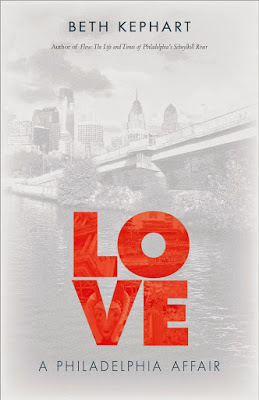 (coming soon, from Temple University Press)
(coming soon, from Temple University Press)<!-- /* Font Definitions */ @font-face {font-family:Arial; panose-1:2 11 6 4 2 2 2 2 2 4; mso-font-charset:0; mso-generic-font-family:auto; mso-font-pitch:variable; mso-font-signature:3 0 0 0 1 0;} @font-face {font-family:Times; panose-1:2 0 5 0 0 0 0 0 0 0; mso-font-charset:0; mso-generic-font-family:auto; mso-font-pitch:variable; mso-font-signature:3 0 0 0 1 0;} @font-face {font-family:Calibri; panose-1:2 15 5 2 2 2 4 3 2 4; mso-font-charset:0; mso-generic-font-family:auto; mso-font-pitch:variable; mso-font-signature:3 0 0 0 1 0;} @font-face {font-family:Cambria; panose-1:2 4 5 3 5 4 6 3 2 4; mso-font-charset:0; mso-generic-font-family:auto; mso-font-pitch:variable; mso-font-signature:3 0 0 0 1 0;} /* Style Definitions */ p.MsoNormal, li.MsoNormal, div.MsoNormal {mso-style-parent:""; margin:0in; margin-bottom:.0001pt; mso-pagination:widow-orphan; font-size:12.0pt; mso-bidi-font-size:10.0pt; font-family:"Times New Roman"; mso-ascii-font-family:Cambria; mso-ascii-theme-font:minor-latin; mso-fareast-font-family:Cambria; mso-fareast-theme-font:minor-latin; mso-hansi-font-family:Cambria; mso-hansi-theme-font:minor-latin; mso-bidi-font-family:"Times New Roman"; mso-bidi-theme-font:minor-bidi;} @page Section1 {size:8.5in 11.0in; margin:1.0in 1.25in 1.0in 1.25in; mso-header-margin:.5in; mso-footer-margin:.5in; mso-paper-source:0;} div.Section1 {page:Section1;} </style><br />--> <div class="MsoNormal" style="margin-bottom: .1pt; margin-left: 0in; margin-right: 0in; margin-top: .1pt; mso-para-margin-bottom: .01gd; mso-para-margin-left: 0in; mso-para-margin-right: 0in; mso-para-margin-top: .01gd; text-align: justify;"><span style="color: #cc0000;"><span style="mso-bidi-font-family: "Times New Roman"; mso-bidi-font-size: 11.0pt;">Once again Beth Kephart enlightens her readers about her love affair with Philadelphia in her new book <i style="mso-bidi-font-style: normal;">Love</i>. She explores the everyday and historical aspects of the City of Brotherly Love and brings them to life. Simplistic, beautifully chosen words engage the reader, painting a picture of the ordinary and making it extraordinary – and truly authentic. Well done and well worth the read.” </span><span style="mso-bidi-font-family: "Times New Roman";"></span></span></div><span style="color: #cc0000;"> </span><br /><div class="MsoNormal" style="margin-bottom: .1pt; margin-left: 0in; margin-right: 0in; margin-top: .1pt; mso-para-margin-bottom: .01gd; mso-para-margin-left: 0in; mso-para-margin-right: 0in; mso-para-margin-top: .01gd; text-align: justify;"><br /></div><span style="color: #cc0000;"> </span><br /><div class="MsoNormal" style="margin-bottom: .1pt; margin-left: 0in; margin-right: 0in; margin-top: .1pt; mso-para-margin-bottom: .01gd; mso-para-margin-left: 0in; mso-para-margin-right: 0in; mso-para-margin-top: .01gd; text-align: justify;"><span style="color: #cc0000;"><span style="mso-bidi-font-family: "Times New Roman"; mso-bidi-font-size: 11.0pt;">— Jack Ferguson, President and CEO, Philadelphia Convention and Visitors Bureau</span><span style="mso-bidi-font-family: "Times New Roman";"></span></span></div><span style="color: #cc0000;"> </span><br /><div class="MsoNormal" style="margin-bottom: .1pt; margin-left: 0in; margin-right: 0in; margin-top: .1pt; mso-para-margin-bottom: .01gd; mso-para-margin-left: 0in; mso-para-margin-right: 0in; mso-para-margin-top: .01gd; text-align: justify;"><br /></div><span style="color: #cc0000;"> </span><br /><div class="MsoNormal" style="margin-bottom: .1pt; margin-left: 0in; margin-right: 0in; margin-top: .1pt; mso-para-margin-bottom: .01gd; mso-para-margin-left: 0in; mso-para-margin-right: 0in; mso-para-margin-top: .01gd; text-align: justify;"><span style="color: #cc0000;"><span style="mso-bidi-font-family: "Times New Roman"; mso-bidi-font-size: 12.0pt;">“<i style="mso-bidi-font-style: normal;">Love </i>is a lovely literary tour of places and spaces in and around Philadelphia. Kephart does a wonderful job of drawing you into her emotional connections to neighborhoods, to transportation routes, to some of the truly fascinating and iconic buildings around this ever-changing city, and to places that draw you outside Philadelphia—but not so far that you cannot return quickly. Her lyrical prose instantly unites you with streets you’ve walked down before—but now with a bit more attention to details than you ever considered before. Seen through Kephart’s eyes and words, Philadelphia <i style="mso-bidi-font-style: normal;">is </i>a place of new beginnings.”</span></span></div><span style="color: #cc0000;"> </span><br /><div class="MsoNormal" style="margin-bottom: .1pt; margin-left: 0in; margin-right: 0in; margin-top: .1pt; mso-para-margin-bottom: .01gd; mso-para-margin-left: 0in; mso-para-margin-right: 0in; mso-para-margin-top: .01gd; text-align: justify;"><br /></div><span style="color: #cc0000;"> </span><br /><div class="MsoNormal" style="margin-bottom: .1pt; margin-left: 0in; margin-right: 0in; margin-top: .1pt; mso-para-margin-bottom: .01gd; mso-para-margin-left: 0in; mso-para-margin-right: 0in; mso-para-margin-top: .01gd; text-align: justify;"><span style="color: #cc0000;"><span style="mso-bidi-font-family: "Times New Roman"; mso-bidi-font-size: 12.0pt;">— Siobhan A. Reardon, President and Director, Free Library of Philadelphia</span><span style="mso-bidi-font-family: "Times New Roman";"></span></span></div><span style="color: #cc0000;"> </span><br /><div class="MsoNormal" style="margin-bottom: .1pt; margin-left: 0in; margin-right: 0in; margin-top: .1pt; mso-para-margin-bottom: .01gd; mso-para-margin-left: 0in; mso-para-margin-right: 0in; mso-para-margin-top: .01gd; text-align: justify;"><br /></div><span style="color: #cc0000;"> </span><br /><div class="MsoNormal" style="margin-bottom: .1pt; margin-left: 0in; margin-right: 0in; margin-top: .1pt; mso-para-margin-bottom: .01gd; mso-para-margin-left: 0in; mso-para-margin-right: 0in; mso-para-margin-top: .01gd; text-align: justify;"><span style="color: #cc0000;"><span style="background: white none repeat scroll 0% 0%;">“</span><span style="background: white none repeat scroll 0% 0%;">In her new book</span> <i style="mso-bidi-font-style: normal;"><span style="background: white none repeat scroll 0% 0%;">Love</span></i><span style="background: white none repeat scroll 0% 0%;">, Beth Kephart has beautifully captured the heart and soul of our city. She captures its complexity by writing eloquently about its beauty, the respect for the past, the resilience of its citizens and an embrace of creativity and innovation unfolding at the speed of light. Set against an extraordinary backdrop of some of our city and region’s most beloved sites, Kephart paints a picture of an area where the past, present and future come together to create a unique and wonderful place that is exciting for those of us who live here and a great treat for those who travel here from across the county and the globe.”</span></span></div><span style="color: #cc0000;"> </span><br /><div class="MsoNormal" style="margin-bottom: .1pt; margin-left: 0in; margin-right: 0in; margin-top: .1pt; mso-para-margin-bottom: .01gd; mso-para-margin-left: 0in; mso-para-margin-right: 0in; mso-para-margin-top: .01gd; text-align: justify;"><br /></div><span style="color: #cc0000;"> </span><br /><div class="MsoNormal" style="margin-bottom: .1pt; margin-left: 0in; margin-right: 0in; margin-top: .1pt; mso-para-margin-bottom: .01gd; mso-para-margin-left: 0in; mso-para-margin-right: 0in; mso-para-margin-top: .01gd; text-align: justify;"><span style="color: #cc0000;"><span style="background: white none repeat scroll 0% 0%;">— Jane Golden, Executive Director, Mural Arts Program</span></span><span style="mso-bidi-font-family: "Times New Roman";"></span></div><div class="MsoNormal" style="margin-bottom: .05pt; margin-left: 0in; margin-right: 0in; margin-top: .05pt; text-align: justify;"><span style="font-family: Calibri; font-size: 11.0pt;"> </span><span style="font-family: Times; font-size: 10.0pt;"> </span></div><div class="feedflare">
<a href="http://feeds.feedburner.com/~ff/BethK... src="http://feeds.feedburner.com/~ff/BethK..." border="0"></img></a> <a href="http://feeds.feedburner.com/~ff/BethK... src="http://feeds.feedburner.com/~ff/BethK..." border="0"></img></a> <a href="http://feeds.feedburner.com/~ff/BethK... src="http://feeds.feedburner.com/~ff/BethK..." border="0"></img></a> <a href="http://feeds.feedburner.com/~ff/BethK... src="http://feeds.feedburner.com/~ff/BethK..." border="0"></img></a>
</div>
Published on June 26, 2015 12:27
keeping the boundaries clear, when reviewing memoir
 When we critique a memoir we are not critiquing a life. We must, instead, respect the boundaries. Our job is to appraise the art, the intent, the structure, the reach, but not the overt or implied "moralities" of the person who has just written her idea about her own story.
When we critique a memoir we are not critiquing a life. We must, instead, respect the boundaries. Our job is to appraise the art, the intent, the structure, the reach, but not the overt or implied "moralities" of the person who has just written her idea about her own story.Sure, there will always be talk about the memoirist as a person; there will always be those conversations, sparked. The job of a reviewer, though, is to explain and ponder what the memoirist has put at stake without imposing one's own politics upon it.




Published on June 26, 2015 04:35
June 24, 2015
In writing about the young, embrace complexity: what we learn from Per Petterson in Ashes in My Mouth, Sand in My Shoes
 My dear friend Alyson Hagy sends gems through the mail. All kinds of art I would never otherwise see. Stories and poems and images that elevate my trust in this world, our capacity, as humans, to transcend ourselves.
My dear friend Alyson Hagy sends gems through the mail. All kinds of art I would never otherwise see. Stories and poems and images that elevate my trust in this world, our capacity, as humans, to transcend ourselves.Alyson also knows of my great passion for Per Petterson and not long ago sent me Ashes in My Mouth, Sand in My Shoes, a story collection Petterson wrote early in his career—and has recently been released by Graywolf.
A young boy named Arvid who lives just outside Oslo stands at the heart of these linked interludes. Petterson rushes and hushes us into his world with language that splits seams. He is too young to understand and filter at first. We watch him want, concede, defy, question, and finally grow from childhood into manhood through an act of singular compassion. Arvid's childhood is a most remarkable transformation built of most ordinary moments. It's an astonishing trick, this tiny book. A master class in writing from a child's perspective, a book for adults, certainly, in the same way that Joyce's Portrait of the Artist is for adults. But it is also a book for anyone working within the middle grade/young adult realm.
This is character development.
This is knowing.
This is art.
This is what the brains of the young are capable of seeing, feeling, thinking, and this is what we must aspire to as writers, no matter what age we think we are writing for. The minds and lives of children and young people are complex. They cannot be realistically distilled into issues. They don't organize neatly around obvious plots. They are the last thing in the world from nuance-free one-liners.
One passage of many. He is speaking of his mother.
She'd looked the way she always had for as far back as he could remember, and she still did right up until the day he happened to see a photograph of her from before he was born, and the difference floored him. He tried to work out what could have happened to her, and then he realised it was time that had happened and it was happening to him too, every second of the day. He held his hands to his face as if to keep his skin in place and for many nights he lay clutching his body, feeling time sweeping through it like little explosions. The palms of his hands were quivering and he tried to resist time and hold it back. But nothing helped, and with every pop he felt himself getting older.
He cried, and said to his mother:
'I don't want to get older. I want to stay like I am now! Six and a half, that's enough, isn't it?' But she smiled sadly and said, to every age its charm. And time withdrew to the large clock on the wall in the living room and went round alone in there, like a tiger in a cage, he thought, just waiting, and Mum became Mum again, almost like before.
It is not, contrary to the opinion of some, easier to write for younger readers. It should not be. Our job, I think, is to keep on seeking ways to embrace and elevate the complexity that makes us true and hurt and human.




Published on June 24, 2015 03:10
June 23, 2015
I made a vase. It doesn't leak.
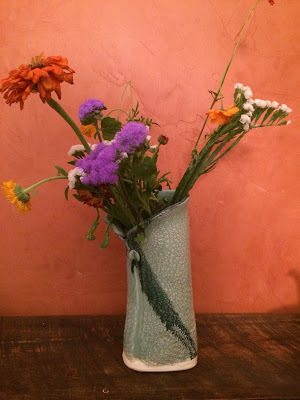 When working with the earth and with glaze you cannot control a lot of things.
When working with the earth and with glaze you cannot control a lot of things.But you can control some.
I like that feeling.




Published on June 23, 2015 16:27
paperback writer (three upcoming releases)
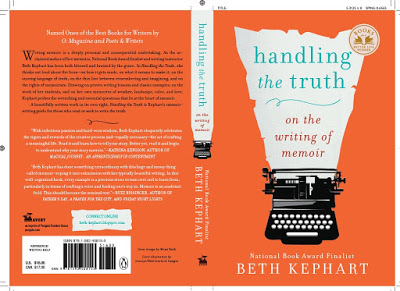
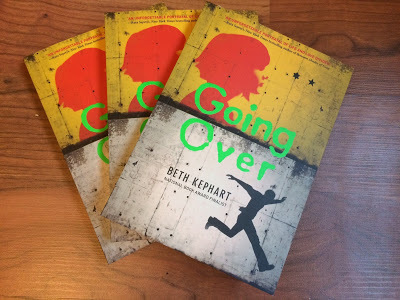
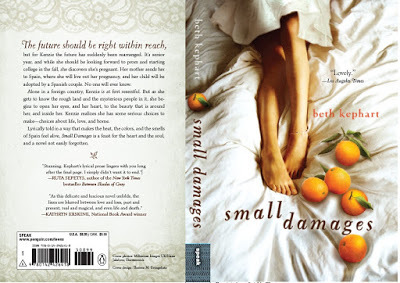 On this day, ahead of a predicted storm, I'm happy to share these three images—snapshots of books living forward.
On this day, ahead of a predicted storm, I'm happy to share these three images—snapshots of books living forward.Handling the Truth: On the Writing of Memoir will be released in a month or so by Avery—its fourth printing—with a newly crafted afterword (featuring some of the newly read memoirs and evolving memoir theories I've had since Handling was first released in August 2013).
Going Over will be released by Chronicle as a paperback in November, following a happy run as a hardback (thank you, kind librarians, teachers, readers).
Small Damages has just been released by Speak (Penguin Random House) in its second edition paperback—slightly different packaging, same story, and much gratitude to those who found and read the book either as a Philomel hardback or a first-edition Speak paperback.




Published on June 23, 2015 04:49
a small glimpse into the Krakow reading life, in a Krakow bookshop
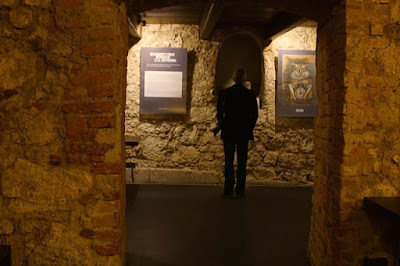
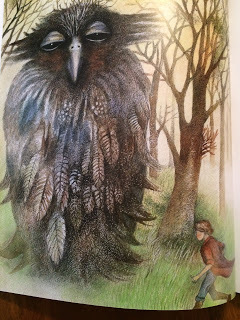
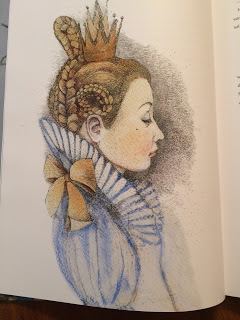
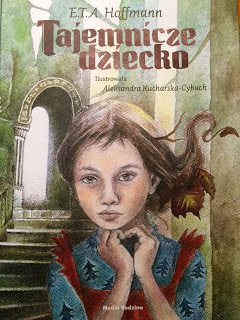
On another rainy day in Krakow we slipped inside a miniature palace of books. I could have stayed the entire day. I don't know a word of Polish. I didn't know these authors. But the art, the bindings, the printing—it was like stepping back into that time when my mother tucked herself behind a couch and put on puppet shows. It was like sitting with my uncle as he made his fabulous Victorian ornaments—velvet ribbons, pearls, scrapbook faces.
That kind of richness of escape into other worlds.
The store itself, called Bona, was located just down the road from Wawel Castle, but it wasn't a place for tourists. There were pastries in the back, a winding staircase to a stone-faced exhibition room, a reading lounge, and a young woman with impeccable English who helped me understand where Poland is just now, as a reading country. Illustrated picture books like the one I bought, above, exude, she said, a timelessness and also an agelessness; adults find one thing in the story and children another. Young adult books have not yet reached the popularity they have here in the states, perhaps because adults read novels written for adults or spend time with these glorious art-infused picture books. And paper books—the tangible, shelf-able kind—remain a towering favorite, both because of the quality of the art and because digital reading devices can cost up to half a young person's monthly salary.
The number of books in the store wasn't huge. The quality, however, was. It took a long time for me to choose this one, and then another little bit to choose the book I brought home for my friend Karolina, whose stories of a Krakow childhood had brought me to her country in the first place.




Published on June 23, 2015 04:31



